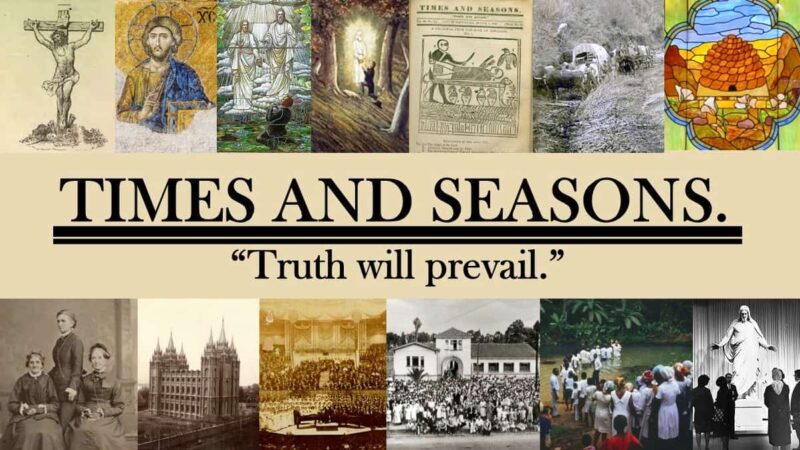My favorite big family memes


It’s difficult to study large families in the US because most surveys have what is called “right-censored data,” where they cap it at, say 4 and above, so we can’t look specifically at, say, eight or above families. However, I found one dataset, the Cooperative Election Study, that does actually have single-child number of children under 18 values. So I did some quick numbers to see how common the proverbial big Catholic/Latter-day Saint/Orthodox Jewish/Evangelical family is.
Of course, where exactly you put the “big family” line is always to some extent arbitrary. As longtime readers know I have eight children, and with every additional child we had the same moment of “three kids is a lot, but four kids is a looot,” and then “four kids is a lot, but five kids is really a lot,” and so on. It’s a Sorites Paradox situation. So I’m putting the “big family” line here somewhat arbitrarily at 6 children plus under the age of 18. As seen below, while about 1-2% of Protestants and Catholics have big families, it’s 6% of Latter-day Saints and 3% of Muslims. So we literally have about 3-6x the big, young families of the mainstream US traditions. For what it’s worth, I only know of four other people in my (Millennial) generation that have our same family size of eight or more—and they all work for the Church or Church-affiliated schools.
% “Big Family”
| Protestant | 1.6 |
| Roman Catholic | 1.3 |
| Mormon | 6.2 |
| Eastern or Greek Orthodox | 0.8 |
| Jewish | 1.2 |
| Muslim | 2.8 |
| Buddhist | 0.2 |
| Hindu | 0 |
| Atheist | 0.4 |
| Agnostic | 0.5 |
| Nothing in particular | 1.5 |
| Something else | 2.2 |
What this means is that, our relatively small numbers notwithstanding, we are actually a relatively large proportion of the big families in the US, about 1 in 20 big, young families are Latter-day Saints, while one in three are still Protestants, and about one in five or so are Catholics.
Religious Affiliation of 6+ Families in the US (%)
| Protestant | 36.6 |
| Roman Catholic | 17.4 |
| Mormon | 4.6 |
| Eastern or Greek Orthodox | 0.3 |
| Jewish | 2.3 |
| Muslim | 1 |
| Buddhist | 0.1 |
| Hindu | 0 |
| Atheist | 2.3 |
| Agnostic | 2.7 |
| Nothing in particular | 20.6 |
| Something else | 12.1 |
Unfortunately, the Catholic option doesn’t split it out for, say, Traditional Latin Mass versus Novus Ordo Catholics, but they do have Jewish religious tradition, so breaking that down even more we see that about 7% of Orthodox have large, young families, while for all other Jewish traditions it’s 1-2%. Also, it’s worth noting that this is probably not including a lot of the even larger families of the Haredi community, since they don’t like taking surveys, so it’s probably around 7% of Modern Orthodox. However, there are only 8 Orthodox with large families in the sample, so at this point we’re straining our ability to derive too much from the numbers involved.
When we split it out by religiosity, about 2% of people who say that religion is “very important” have large families, while for everybody else it’s about 1%. This means that about half of all large families come from people who say religion is “very important” in their lives, while 1/10 say “not too important,” and 14% say “not at all important.”
So the secular big family, while a minority, is a significant minority. This actually tracks my own non-representative experience. I am part of several large-family Facebook groups that share tips on how to manage having one child in the emergency room while your house is leaking while your car is breaking down while…. (one calls to mind the Jim Gaffigan quote, “having a large family is like you’re drowning…and somebody hands you a baby.”) And while there are definitely a lot of religious people, there actually are also some not particularly religious women (and it is usually women, I’m one of the very few men in those groups) that have just decided to have a large family.
Methodological Minutiae
As far as I can tell the CES only has the “children under 18” number, so we are not including all of the empty nesters who had large families at home. This gives us 701 “big, young families” in 2024. At these relatively small cell sizes I’m ignoring weights, plus it’s worth noting that for really small percentages like these some of the people selecting that they have a lot of children are people who aren’t filling out the survey right (see base rate fallacy), so I suspect that these numbers are somewhat inflated, but they should suffice for comparative purposes.

Comments
10 responses to “How Common are Large Latter-day Saint Families?”
I’m not sure if BYU still has this health insurance policy, but a few years ago we were told that it only cost about $1000 to have a baby. (In comparison, it cost about $4000 for me and $1000 for the baby with no complications.) I wonder if that made it marginally easier for BYU professors to have bigger families (perhaps to have that 6th kid instead of the 5 they were planning on.)
I have 10 kids, and I recall an online survey I took a few months ago. One of the question “how many children do you have?” and I entered “10”
I got an “ERROR! Numerical value cannot be above 9!” response.
okay……
Catherine Pakaluk used five or more kids as the definition of large families for her book Hannah’s Children. I haven’t read it, but I have heard her being interviewed about it multiple times.
If I am remembering correctly her target dataset was women who were college graduates with five or more children.
Lunar Maria: $1,000 per kid? That would be awesome. Given how much kids cost in both time and money, I don’t think a couple thousand would budge the needle that much (and the research agrees with me); that being said, the depopulation and birth rate issue is a decon-5, five-alarm fire level emergency, so free childbirths at the very minimum should be a no-brainer.
Ivan Wolfe: Lol.
Jader3rd: Hannah’s Children is a great book, but I actually forgot that it was about college-educated mothers in particular.
Catholics are less likely to have big families than Protestants? Wow, that’s quite a shift. The difference may not be significant (regardless of the p-value–under the circumstances I agree with ignoring the weights and just taking everything with a grain of salt) but it also doesn’t break out evangelicals vs. mainline Protestants. I presume that would give a much higher probability for evangelicals.
Growing up in a family of eight kids in the 70s and 80s, people always assumed we were Catholic. Stephen, do people now assume you are evangelical (when you’re not in Utah)?
If you’ll forgive some amateur sociology of religion…
1) There’s a chasm between lay Catholics and Catholic clergy on reproductive issues, especially the more conservative clergy. That can’t be sustainable.
2) As I understand it, evangelicals didn’t really take a strong position on reproductive issues until after the formation of the “religious right.” My impression isn’t that they consciously chose to change their doctrine for the sake of political expediency, but rather once they decided Catholics were allies they had more exposure to Catholic thinking and found it more persuasive. Stephen Fleming’s recent post expressed concern about us merging with the religious right, and this is an example of the kind of thing that can happen. Indeed, I think some of our members’ thinking on abortion now reflects Catholic (and evangelical) thinking better than the Church’s actual policies.
Methodology note: focusing on children under 18 doesn’t just exclude empty nesters–a family of eight children will only have a fairly short window where they’re all under 18. I’m the oldest, and for my youngest siblings I was an occasional visitor rather than a permanent resident for the majority of their childhoods.
Well, I don’t know if it’s “less,” I think it’s about the same. But yes, evangelicals would presumably be much more likely have larger families than mainliners, but by the same token the Catholic pile has a lot of the Christmas Catholics.
The people who know me well enough all know I’m Latter-day Saint, and the random people at the grocery store who see me with my kids just think I’m…weird.
In a sense the abortion issue is distinct, but not unrelated, from the big family norm. Yes, it would probably be hard to find a 10-kid religious family who’s totally cool with abortion like the 2025 DNC is, but you could also find very pro-life two kid families. So while it’s related in a deep way I don’t get the sense that fertility differentials stem too directly from a tradition’s history on the abortion issue.
FWIW–and, I’m not sure what it might be worth, if anything–into the 2000s DMBA (the health insurance arm of BYU, CES & the Church) would not cover a hysterectomy, even when medically indicated, if the patient had fewer than four children. There was a procedure for requesting waiver of the policy but (I was reliably informed) waivers were rarely granted. I don’t know if this policy continues.
FWIW 2, DMBA did not cover conctraception until relatively recently–2020? (As an “integrated auxiliary” of the Church, DMBA was exempt from the ACA contraception mandate; whatever precipitated the change in coverage, it was not Obamacare.)
Freddo: Wow, I had no idea. Things have changed so fast it’s good to put a cognitive pin in certain places so that we don’t forget. I also didn’t know that the Church took advantage of the Catholic contraception exemption, because of course theologically that doesn’t mean nearly the same thing to Latter-day Saints that it does to Catholics.
One of my weirder large-family experiences was entering all my dependents on the IRS Form 1040. It made sense that there were only spaces for four dependents, but the weird part was that for more than four dependents, the tax filer was instructed to write all the information for them on a piece of paper and attach that to the return. There are dozens of forms for all kinds of issues relevant to small subsets of tax filers, but having more than four dependents was treated like something so far off the map that people in that situation were just supposed to improvise. Two different years IRS messed up processing that extra sheet of paper of dependent information, and I had to wrangle months after to get my full refund sent.
Another denomination to consider in these stats are the Amish, who typically have 9 children on average: https://amishamerica.com/how-many-children-do-amish-have/